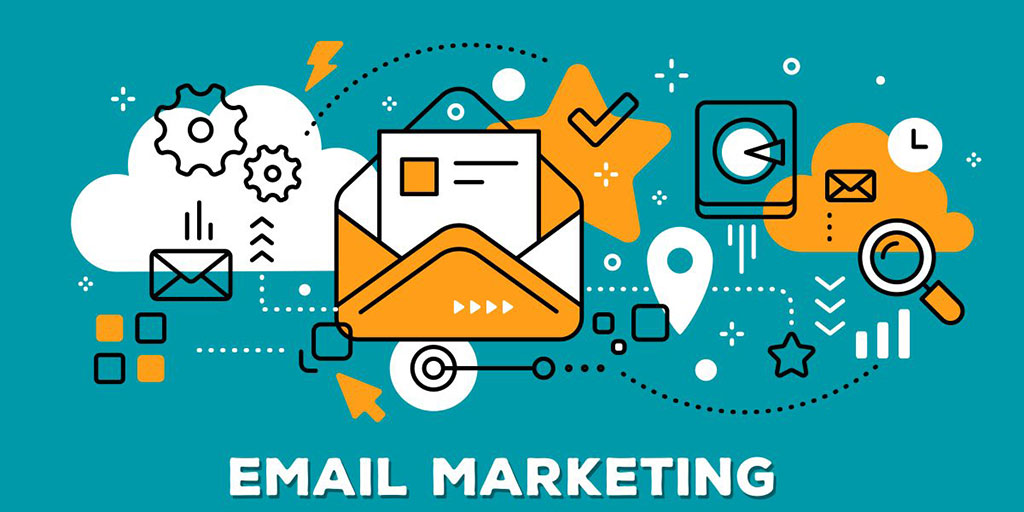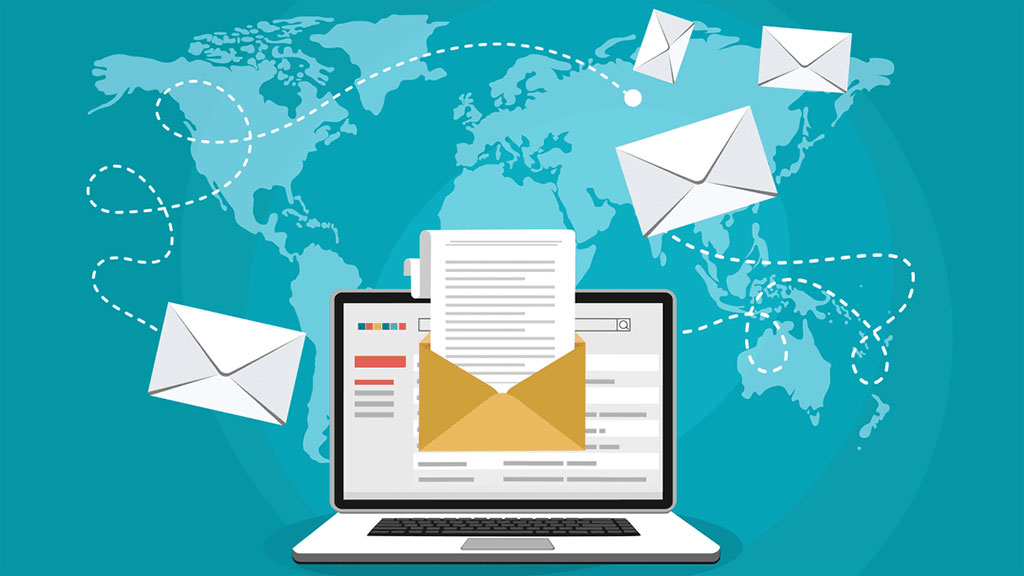Email Marketing for E-commerce: A powerful tool for businesses to build relationships, promote new products or services, and drive sales. With the rise of online shopping, e-commerce businesses are increasingly utilizing email marketing to reach and engage with customers.
There are several strategies that e-commerce businesses can use to drive sales through email marketing. These include building and segmenting an engaged email list, crafting personalized emails that speak to the recipient, implementing campaigns such as abandoned cart, win-back, upselling and cross-selling and product launch and promotion, and testing and optimizing campaigns for better performance.

In this guide, we will be exploring the different strategies that e-commerce businesses can use to drive sales through email marketing. We will be providing tips and strategies for building and segmenting an engaged email list, crafting personalized emails, implementing campaigns and optimizing and analyzing email campaigns for better performance. By following this guide, e-commerce businesses will be able to understand how to effectively use email marketing to drive sales and grow their business.
Email Marketing for E-commerce”: What are some effective strategies for driving sales through email marketing?
1. Building and Segmenting Your Email List

Building and segmenting an engaged email list is essential for e-commerce businesses to effectively use email marketing to drive sales. An engaged email list is a group of subscribers who are interested in your products or services and are more likely to open, click on and make a purchase from your emails.
The importance of building an engaged email list cannot be overstated. An engaged email list allows you to reach and engage with customers, promote new products or services, and drive sales. The more engaged your email list is, the more successful your email marketing campaigns will be.
Here are some techniques for growing your email list:
Offering a lead magnet
A lead magnet is a valuable piece of content, such as an e-book or webinar, that is offered in exchange for a potential customer’s contact information. This can be an effective way to grow your email list.
Using pop-ups and forms
Using website pop-ups and forms to capture email addresses can be an effective way to grow your email list.
Creating landing pages
Creating landing pages specifically for the purpose of growing your email list can be an effective way to grow your email list.
Running social media campaigns
Running social media campaigns to promote your email list can be an effective way to grow your email list.
Once you have a solid email list, it’s important to segment it to target specific groups of subscribers. This allows you to send targeted and personalized emails that address the specific needs and interests of your subscribers. Segmenting your email list can be done based on demographics, behavior, purchase history, and other data points. By segmenting your email list, you can create more personalized and relevant emails that are delivered at the right time, increasing the chances of engagement and conversion.
Here are some examples of how you can segment your email list:
- Demographics: Segment your email list by age, gender, location, and other demographic data.
- Behavior: Segment your email list by the pages they visit on your website, the products they have viewed, and their purchase history.
- Interests: Segment your email list by the interests and preferences of your subscribers.
- Purchase history: Segment your email list by the products or services your subscribers have previously purchased.
By building and segmenting an engaged email list, e-commerce businesses can create more personalized and relevant emails that are delivered at the right time, increasing the chances of engagement and conversion. This can lead to more sales, repeat customers, and growth for the business.
2. Crafting the Perfect Email

Crafting the perfect email is crucial for e-commerce businesses to effectively use email marketing to drive sales. An effective email design, compelling subject line, and personalized content can help to increase open rates, click-through rates, and ultimately, sales.
Here are some elements of an effective email design for e-commerce businesses:
Branding
Use your brand’s colors, logo, and typography to create a consistent and visually appealing design.
Layout
Use a clear and simple layout that is easy to read and navigate.
Images
Use images of your products or services to showcase them and make them appealing to potential customers.
Calls to action
Include clear and prominent calls to action (CTA) in your emails to encourage subscribers to make a purchase.
Writing compelling subject lines and headlines is also crucial for the success of your email marketing campaigns. A subject line is the first thing a subscriber sees in their inbox, and it can make or break the success of your email. A compelling subject line can increase the chances of your email being opened.
Here are some tips for writing compelling subject lines and headlines:
Keep it short and sweet
Keep your subject lines short and to the point, ideally around 50 characters or less.
Use power words
Use power words that evoke emotion or a sense of urgency to grab the attention of your subscribers.
Personalize
Use the subscriber’s name or other personalization in the subject line to make it more relevant to them.
Creating personalized content that speaks to the recipient is also crucial for the success of your email marketing campaigns. By creating personalized content, you can increase the chances of engagement and conversion.
Here are some tips for creating personalized content that speaks to the recipient:
Use segmentation: Use segmentation to create content that is relevant to specific groups of subscribers.
Use personalization: Use personalization to make the email more relevant to the subscriber.
Use storytelling: Use storytelling to create an emotional connection with the subscriber and make the content more engaging.
Use customer testimonials: Use customer testimonials to show the value of your products or services and build trust with the subscriber.
By following these tips for crafting the perfect email, e-commerce businesses can create emails that are visually appealing, have compelling subject lines and headlines, and are personalized to the recipient, resulting in higher open rates, click-through rates, and ultimately, more sales.
3. Email Campaigns for Driving Sales

Email campaigns are a powerful tool for e-commerce businesses to drive sales. By implementing specific campaigns, businesses can target different segments of their email list, and increase the chances of engagement and conversion. Here are some specific campaigns that e-commerce businesses can use to drive sales:
Abandoned cart email campaigns
An abandoned cart email campaign is sent to customers who have added items to their cart but did not complete the purchase. This campaign can be used to remind customers of the items they left behind and encourage them to complete the purchase.
Win-back email campaigns
A win-back email campaign is sent to customers who have not made a purchase in a while. This campaign can be used to re-engage these customers and encourage them to make a purchase.
Upselling and cross-selling email campaigns
Upselling and cross-selling email campaigns are used to promote related or complementary products or services to existing customers. This can be an effective way to increase the value of a single purchase.
Product launch and promotion email campaigns
Product launch and promotion email campaigns are used to promote new products or services, or to offer special promotions to customers. This campaign can be used to increase sales and generate buzz around a new product or service.
By implementing these specific campaigns, e-commerce businesses can target different segments of their email list, and increase the chances of engagement and conversion. These campaigns can be used to remind customers of abandoned items, re-engage with inactive customers, promote related products, and generate buzz around new products and services.
4. Optimizing and Analyzing Email Campaigns

Optimizing and analyzing email campaigns is essential for e-commerce businesses to effectively use email marketing to drive sales. By testing and analyzing campaigns, businesses can identify what is working and what is not, and make data-driven decisions to improve the performance of their campaigns.
The importance of A/B testing cannot be overstated. A/B testing is the process of testing two variations of an email campaign, such as subject line, design, or content, to see which one performs better. This allows businesses to make data-driven decisions on what works and what doesn’t, and optimize their campaigns for better performance.
There are several tools available for testing and analyzing email campaign performance. These tools can provide valuable insights into open rates, click-through rates, conversion rates, and other metrics. Some popular tools include Google Analytics, MailChimp, and Constant Contact.
Here are some tips for optimizing email design and content for e-commerce businesses:
- Use a clear and simple layout: Use a clear and simple layout that is easy to read and navigate.
- Use images of your products: Use images of your products or services to showcase them and make them appealing to potential customers.
- Include clear and prominent calls to action: Include clear and prominent calls to action (CTA) in your emails to encourage subscribers to make a purchase.
- Use personalization: Use personalization to make the email more relevant to the subscriber.
By testing and analyzing email campaigns, e-commerce businesses can identify what is working and what is not, and make data-driven decisions to improve the performance of their campaigns. By optimizing email design and content, e-commerce businesses can increase the chances of engagement and conversion and ultimately drive more sales.
Click Here to Boost Your Online Presence: A Guide to Social Media Marketing
Email marketing is a powerful tool for e-commerce businesses, and it’s no secret why. With the rise of online shopping, businesses are looking for ways to reach and engage with customers, promote new products or services, and drive sales. Email marketing allows e-commerce businesses to build relationships with customers, promote new products or services, and drive sales.
In this guide, we have explored different strategies that e-commerce businesses can use to drive sales through email marketing. We have discussed building and segmenting an engaged email list, crafting personalized emails, implementing campaigns and optimizing and analyzing email campaigns for better performance.
To sum up, the key takeaways from this guide are:
- Building and segmenting an engaged email list is essential for e-commerce businesses to effectively use email marketing to drive sales
- Crafting personalized emails with compelling subject lines and headlines are crucial for the success of email campaigns
- Implementing specific campaigns such as abandoned cart, win-back, upselling and cross-selling and product launch and promotion can target different segments of the email list
- Optimizing and analyzing email campaigns is essential for e-commerce businesses to make data-driven decisions and improve the performance of their campaigns.
As a final step, we encourage readers to implement the strategies discussed in this guide and start driving more sales for their e-commerce business through email marketing. With the right approach and the right tools, email marketing can be a powerful driver of growth and revenue for e-commerce businesses.







